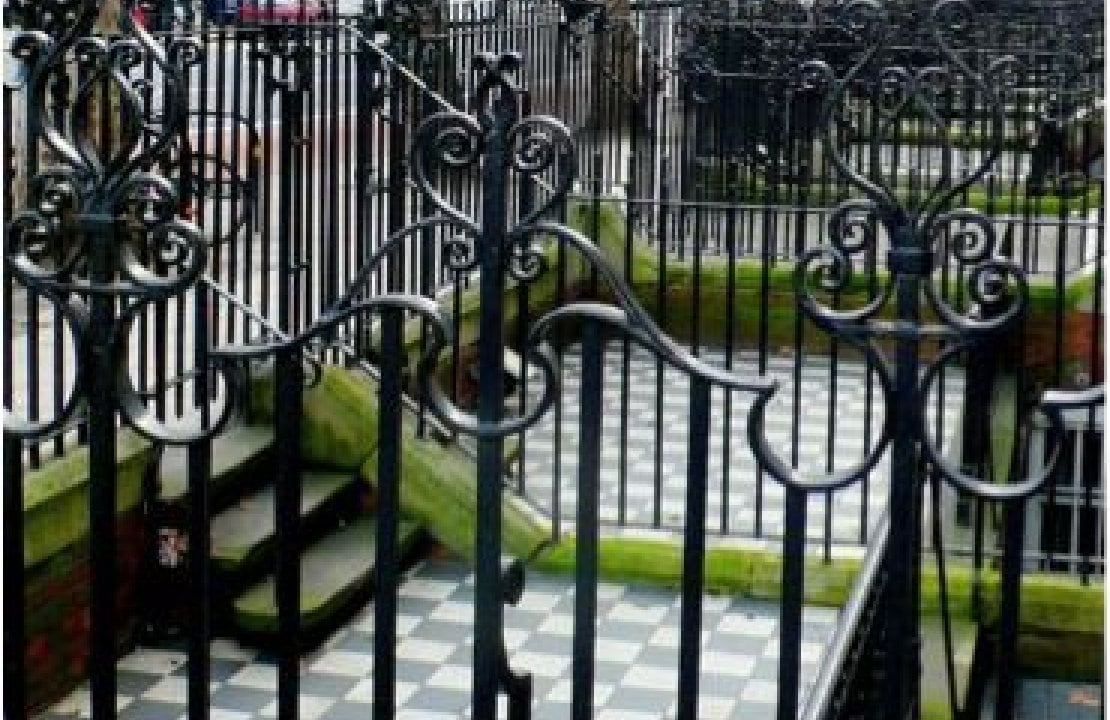Photo By: Nigel Mykura
How can I Restore Wrought Iron Fencing?
- Remove Vegetation and Debris - Over time grass, weeds, and leaves can build up around your fencing. This can retain moisture and cause rust and corrosion. Before beginning your restoration efforts, clean up the area around the fence by removing lose debris, leaves, vegetation, and grass shavings.
- Remove Surface Degradation - Once the debris has been removed, you will see exactly what you are dealing with. You may notice lose rust, corrosion, and peeling paint. Use a stiff wire brush to clean off the surface rust and corrosion. Make sure any peeling paint is also removed. Pay special attention to cleaning intricate curves, designs, and hinged areas with your wire brush, since sanding will be difficult in these areas.
- Smooth out the surface - Use a medium grit sandpaper to smooth out the surface area of the fencing. This will also create a textured finish which will help paint to adhere to the fencing.
- Check for Structural Stability -You should now be able to check the fence for structural integrity. In some cases, welding may be required to reattach areas of the fence that may have degraded beyond simple repair.
- Make Repairs - Check hinges to ensure proper operation, also replace any missing screws or other hardware.
- Cleaning - It is highly recommended you clean wrought iron using only a simple soap and water solution. This will remove any remaining dust or chemicals from the wrought iron. After you have washed down the fence be sure to rinse well and allow the fence to dry completely before proceeding.
- Priming - Applying primer before paint will protect your fencing from rust and corrosion. Uses a rust-inhibiting, exterior rated primer designed specifically for metal and apply an even coat over the entire fence. Aerosol primers can be applied more uniformly than brush painted primer and will also better penetrate the nooks and crannies found in intricate wrought iron design work. To avoid drips, be sure to hold the aerosol can about 8 inches away from the fence surface during application. Wait until the primer is completely dry before applying the enamel paint.
- Applying Enamel - Be sure to use an enamel that is rust-inhibitive, exterior rated, and designed to be used on metal. Black enamel is the most common color to use and is considered “period correct” for historic homes, but feel free to use any color you prefer. Aerosol paint is the best way to go for uniform coverage.

How Do I Preserve Wrought Iron Fencing?
After the restoration process, it is recommended you perform periodic maintenance on your wrought iron fence to keep it looking its best. Maintenance procedures should be performed about twice a year and can include:
- Greasing hinges and other moving parts to prevent seizure
- Cleaning away debris and preventing vegetation growth near the fence
- Making sure to wash the fence or wipe it down, especially if chemicals are applied to nearby grass and plants
- Remove spots of surface rust and corrosion
By following these basic maintenance tips, you can be sure your authentic wrought iron fencing will last a lifetime. Remember, when in doubt consult a professional; especially when serious structural repairs are needed.
BIO:
James Finlayson is a decorating DIY instructor at Ableskills, the largest independent construction skills training centre in the UK. In his spare time he loves writing and growing his own vegetables.

Be the first to add a comment...